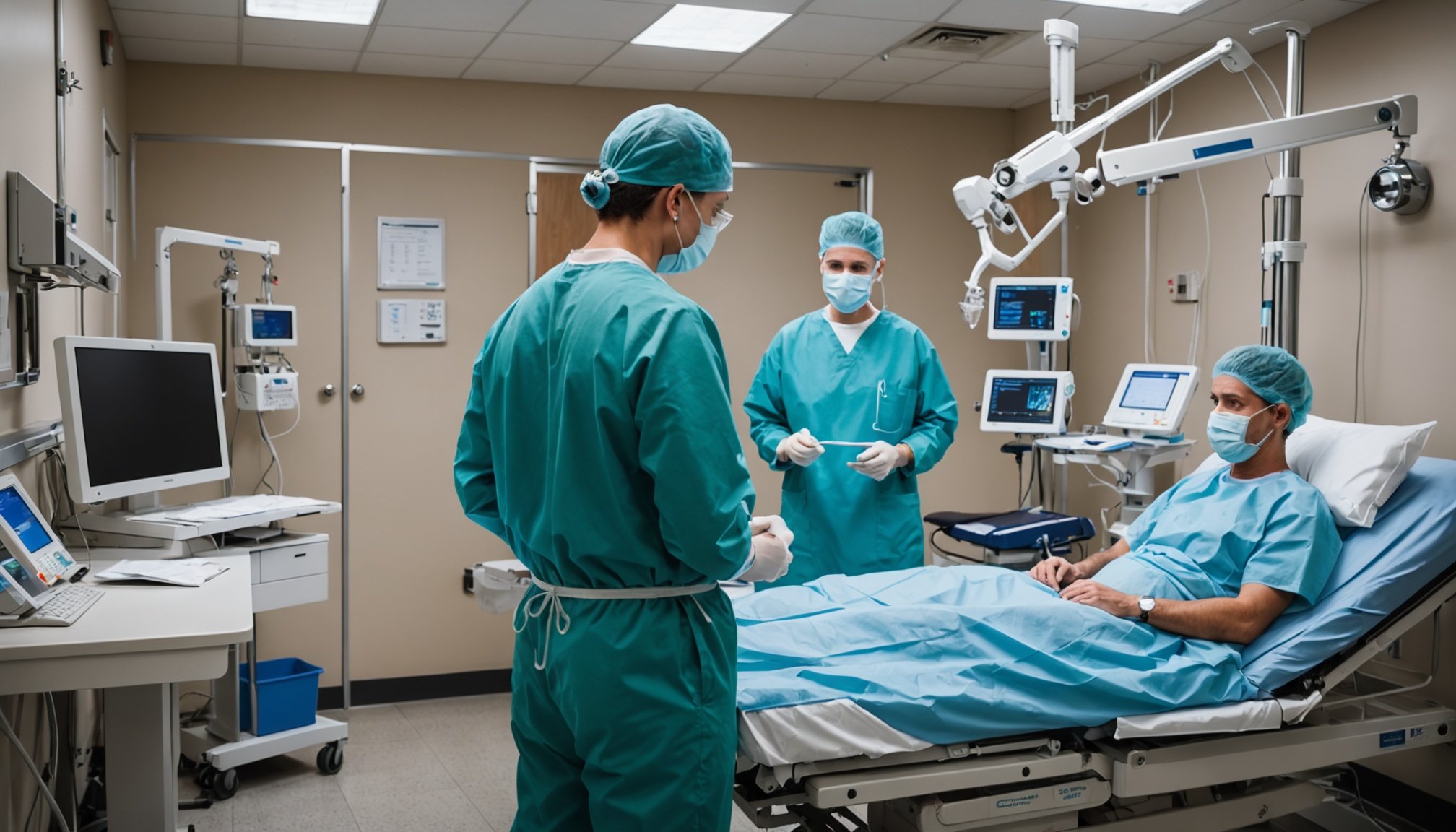Overview of Enhanced Recovery After Surgery (ERAS)
Enhanced Recovery After Surgery (ERAS) programs are an innovative approach designed to improve the recovery process for surgery patients. They aim to minimize the surgical stress response and enhance postoperative recovery, particularly in colorectal surgery. By implementing evidence-based ERAS protocols, the objective is to reduce complications, shorten hospital stays, and increase patient satisfaction.
ERAS protocols encompass a multidisciplinary approach involving preoperative, intraoperative, and postoperative care. Preoperative guidelines might include patient education and nutritional assessments, while intraoperative measures focus on minimally invasive techniques and optimal anaesthetic practices. Postoperatively, early mobilisation and pain management are crucial components.
Topic to read : Exploring the Connection: Can Virtual Learning Boost Teenagers” Physical Activity Levels?
The concept of ERAS dates back to the late 20th century. Originally applied to colorectal surgery protocols, ERAS has progressively expanded across different surgical disciplines. As the healthcare landscape evolved, ERAS programs highlighted the importance of coordination among various healthcare providers. These programs represent a shift from traditional recovery methods, underlining the importance of patient-centred care and proactive surgical recovery guidelines.
By adopting these best practices, healthcare providers can tailor personalized recovery plans focusing on patient safety and efficiency. The continued development and optimisation of ERAS protocols remain a testament to its revolutionary role in surgical practice.
In parallel : Unlocking Heart Health: The Surprising Perks of Omega-3 Fatty Acids for Your Cardiovascular Well-being
ERAS Protocols and Implementation
ERAS implementation begins with a careful, step-by-step process, ensuring a comprehensive approach to surgical recovery guidelines. The foundation of this process lies in establishing a multidisciplinary approach where various healthcare professionals, such as surgeons, anaesthesiologists, and nurses, collaborate. This teamwork ensures each phase of the recovery process is optimised and tailored to individual patient needs.
One crucial component is the systematic training and education for healthcare providers involved in ERAS programs. These initiatives are pivotal for familiarising staff with the best practices in ERAS protocols, reinforcing the importance of precise communication and coordination. Training also involves practical aspects such as simulating perioperative scenarios and addressing potential challenges.
Implementation begins preoperatively with patient advice and expectations management. During surgery, the focus shifts to minimally invasive techniques and anaesthetic precautions. Postoperatively, emphasis is placed on early mobilisation, pain control, and nutritional support.
The success of ERAS relies on its adaptability and careful execution. By integrating evidence-based practices and maintaining open lines of communication, ERAS programs deliver on their promise to enhance patient recovery and minimise surgical stress, ultimately improving overall healthcare outcomes.
Impact of ERAS on Patient Outcomes
Enhanced Recovery After Surgery (ERAS) programs have dramatically influenced patient outcomes in various ways. Recent studies underscore a notable reduction in hospital stay duration, which benefits both patients and healthcare systems economically. This reduction is credited to streamlined recovery metrics that ERAS protocols champion, emphasising swift postoperative care and early mobilisation.
Another significant area of improvement is in patient satisfaction. By reducing surgical stress and aligning recovery expectations, patients report a higher quality of care experience under ERAS protocols compared to traditional recovery methods. This satisfaction is crucial as it correlates with adherence to recovery plans and overall health outcomes.
Moreover, ERAS has been linked to a decrease in postoperative complications, especially in colorectal surgery. This success primarily stems from the comprehensive nature of ERAS protocols, which integrate preoperative planning, intraoperative efficiencies, and postoperative care.
Key findings indicate ERAS programs consistently outperform traditional methods in improving recovery metrics, while patient testimonials reflect a consistent appreciation for the streamlined approach. Ultimately, ERAS demonstrates substantial effectiveness in optimizing surgical recovery, offering a promising alternative to conventional methods.
Statistical Analysis of ERAS Programs
The advent of statistical analysis plays a crucial role in validating the effectiveness of ERAS programs, particularly in colorectal surgery. Rigorous clinical trials underlie this analysis, offering solid methodologies to gauge ERAS’s impact. Most studies utilise randomised controlled trials, ensuring high reliability of data concerning patient recovery outcomes.
Such trials consistently reveal significant findings: ERAS protocols lead to better recovery metrics and reduced hospital stays. These improved outcomes demonstrate both statistical significance and real-world relevance. For instance, metrics reflect a noticeable decrease in postoperative complications, thereby affirming the robustness of ERAS studies.
Colorectal surgery data further illustrate the efficacy of ERAS, highlighting both short-term and long-term benefits for patients. Over extended periods, patients show sustained improvements in postoperative well-being and a lessened likelihood of readmission. While short-term gains are visible in enhanced recovery times and decreased hospital stays.
The value of statistical analysis in ERAS lies in its ability to capture nuanced benefits of the program over conventional methods. By emphasising evidence-based outcomes, it supports broader adoption and ongoing optimisation, ensuring that ERAS remains a pivotal component of advanced surgical care.
Clinical Guidelines and Recommendations
The clinical guidelines for Enhanced Recovery After Surgery (ERAS) are crucial for standardising practices, especially within colorectal surgery. These guidelines provide comprehensive ERAS recommendations that draw from extensive clinical observation and research. They emphasise elements such as nutritional optimisation, minimally invasive techniques, and early postoperative mobilisation.
The beauty of ERAS lies in its flexibility. By adapting these protocols to patient-specific factors, practitioners consider patient health, surgery type, and recovery environment. This adaptability is integral in ensuring optimal outcomes, as personalising the approach maximises the benefits without compromising patient safety.
Looking forward, future directions for ERAS protocols involve the continuous refinement of these established practices. As new research and technology emerge, ERAS practices are likely to evolve, offering even more precise and effective recovery plans. Emphasis on an individualised care approach will likely grow, tailoring more closely to patient needs.
The evolution of ERAS sets a precedent for an ongoing shift towards patient-centred surgical recovery. By following these guidelines and adopting a forward-thinking approach, healthcare institutions foster an environment where efficient and patient-oriented surgical recovery can thrive.
Case Studies and Real-World Applications
Examining case studies reveals the real-world effectiveness and applicability of ERAS programs across diverse medical institutions. These studies present concrete examples of how ERAS transforms surgical recovery processes, illustrating both successes and challenges.
Several institutions, including major hospitals, report significant improvements when implementing ERAS protocols. By adopting a multidisciplinary approach, these institutions highlight a marked reduction in postoperative complications and shortened recovery periods. Success stories often involve colorectal surgery protocols, where adherence to ERAS guidelines dramatically enhances patient outcomes.
However, implementing ERAS is not without challenges. Some facilities faced hurdles such as resistance to change and resource constraints. Overcoming these obstacles required comprehensive training and ongoing education for healthcare providers. Continuous feedback loops from staff and patients played a pivotal role in refining these protocols.
Key lessons from these case studies emphasize the importance of institutional leadership in driving ERAS adoption and embedding it within broader surgical recovery strategies. Insights from this journey underscore the necessity for flexibility in protocol application, tailored to specific patient and environmental needs.
These real-world applications of ERAS furnish invaluable guidance for future implementations, ensuring that the transformative power of ERAS continues to advance surgical care globally.











